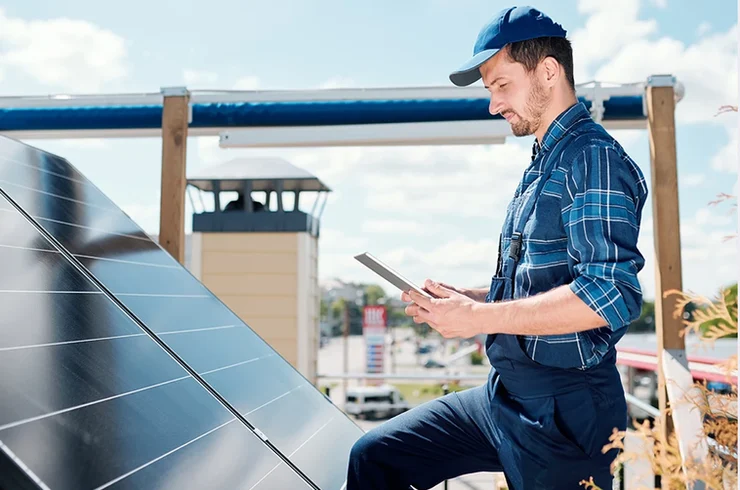As the demand for renewable energy continues to grow in the private & public sectors, many of the companies are expanding and playing an integral role toward achieving energy independence. Solar energy is mainly the source of usable energy generated from the sun in the form of thermal/electrical energy. Aside from generating electricity, solar power can be also used in thermal applications to heat fluids or even indoor spaces. From residential to commercial property owners most of them take advantage of solar technology.
Renewable energy’s boom is sure to play an essential role in 2021-22. Now, let’s take a look at the top solar energy trends to watch out for in 2021:
1) Blockchain: The year 2021 will hold promises for customers to develop blockchain-based products. The implementation of Blockchain smart grids provides cheaper, cleaner energy, and this solution can lead to long-term reduction of carbon emissions and help promote sustainable development across the world. Using Blockchain technology, the source of the energy can be traced and it, in turn, increases transparency and ultimately encourage the use of renewable energy.
2) Digitization: In the coming years, we will get to see the widespread digitization in the power system, right from production and infrastructure to end-user devices. As new technologies continue to emerge, we will be able to see the implementation of artificial intelligence, power management solutions, machine learning, such as through microgrid controllers, etc. Organizations are now leveraging AI & ML to identify and track trends in energy consumption & generation.
3) Price drop in hardware: With many of the technological breakthroughs and exponential growth of the manufacturing industry, the cost of solar cell technology will keep falling in the coming years, allowing low-income countries to more easily pursue renewable energy projects, making it accessible to everyone around. Even though the demand will keep increasing solar power has become more affordable due to policies supporting its implementation.
4) Utilizing ponds as a source of solar energy: Floating photovoltaic panels or Floatovoltaics (FV), are nowadays increasingly used for commercial applications.
5) Harvesting renewable power at night: Researchers from the University of California are developing a new anti-solar technology that can be used to capture radiation for 24-hour power production.
6) Use of BIPV technology: Building-integrated photovoltaic are now designed for use in skyscrapers with plenty of vertical surface space but not much of a rooftop for panels.
7) Solar Cars And Electric Vehicles: EVs allow users to charge their cars using any power source and when this is paired with PV panels, it’s possible to power your vehicles which provides users with an alternate source of backup power while traveling.
Conclusion:
As you can see there is a growing push to integrate solar technology more directly into private & commercial spaces. But this move is made more possible when you stay updated to the trends, power-generation technologies, and construction materials because the potential applications for this technology are huge.
Looking for solar panel installation in Melbourne? SolarToday takes pride in being one of the best solar panel installers in Melbourne who design and execute some of the most efficient solar panel installation and energy efficiency solutions in the region.










